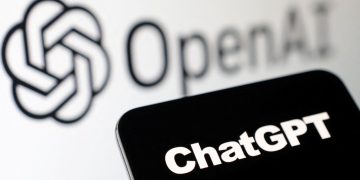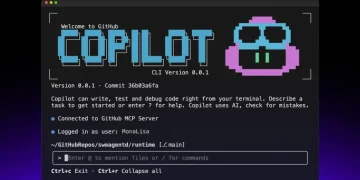For years, the conversation around AI has been stuck in a loop. Is it a hyper-intelligent assistant destined to make us all 10x more productive, or is it a relentless force that will automate our jobs into oblivion? The debate has been fueled by academic tests and abstract benchmarks that feel a world away from the practicalities of a 9-to-5.
But what if we could finally get a real answer? What if we could stop asking what AI knows and start measuring what it can actually do?
That’s the promise of OpenAI is making with its GDPval, a groundbreaking new benchmark. This isn’t another multiple-choice exam for machines. It’s a real-world performance review, designed to gauge AI’s ability to perform the actual, economically valuable tasks that professionals get paid for every single day. The initial results are in, and they provide the clearest picture yet of our AI-powered future. Let’s get into it.
Why We Needed a New Report Card for AI
Let’s be honest: traditional AI benchmarks are broken. They often feel like SAT questions for robots, testing narrow skills in a controlled environment. But a real job isn’t a clean, academic problem. A financial analyst doesn’t just solve equations; they sift through messy spreadsheets, interpret charts, and write persuasive emails. A software developer doesn’t just write code; they debug, refactor, and document.
OpenAI created GDPval to bridge this gap. Sourced from 44 different high-earning occupations across the nine largest sectors of the U.S. economy, from healthcare to finance, the benchmark is made up of 1,320 tasks created by industry experts with an average of 14 years of experience. These aren’t abstract puzzles; they are tasks like “analyze this financial report and create a slide deck for stakeholders” or “review this legal contract for potential risks.”
This approach turns GDPval into a leading indicator. Instead of waiting years to measure AI’s impact through slow-moving adoption rates, we can now get a real-time snapshot of what frontier models are capable of today.
A Blind Taste Test for Professional Work
So, how does OpenAI GDPval actually measure performance? The methodology is as clever as it is simple: a blind comparison.
It works in three steps:
- A Real Task is Assigned: An AI model (like GPT-5 or Claude Opus 4.1) and a human expert are both given the same task and reference files (spreadsheets, documents, images, etc.).
- Both Submit Their Work: The two final deliverables—one from the human, one from the AI—are collected.
- A Grader Judges Blindly: An expert grader from the same profession reviews both submissions without knowing which is which. They are then asked a simple question: “Which deliverable is better, or are they of equal quality?”
The final score is the “win-rate”—the percentage of time the AI’s work was judged to be as good as or better than the human’s. This blind, head-to-head comparison removes bias and focuses on the only thing that matters in the real world: the quality of the final product.
The First Results Are In: AI Is Closing the Gap
The initial findings from GDPval are striking. The best AI models are no longer just “good for a machine”; they are approaching, and in some cases matching, the quality of experienced human professionals.
Anthropic’s Claude Opus 4.1 emerged as the top performer, winning or tying with human experts in a staggering 47.6% of tasks. It particularly excelled in tasks requiring a strong sense of aesthetics, like creating well-formatted documents and visually appealing presentations. OpenAI’s own GPT-5 was not far behind, demonstrating exceptional strength in tasks demanding high accuracy and the ability to follow complex, multi-step instructions.
All Good?
However, the results also revealed clear weaknesses. The most common reason for AI failure was simple: not following instructions precisely. This highlights that while AI’s raw capability is immense, human oversight to ensure it stays on track remains absolutely critical. The rapid improvement from older models like GPT-4o to GPT-5 also signals that these capabilities are growing at an exponential rate.
What This Means for the Future of Your Job
The most profound insight from GDPval is how it reframes the “AI and jobs” debate. It encourages us to see a profession not as a single, monolithic role, but as a collection of individual tasks. Some of these tasks are becoming increasingly automatable.
This doesn’t mean your job is going to disappear. It means your job is going to change.
As AI takes over more of the routine, repetitive work, the value of uniquely human skills will skyrocket. This is apparent from the previous infographic that AI’s impact is way more drastic on certain domains than others. The future of professional work will be less about doing the task and more about directing the task. The skills that will command a premium are the ones AI can’t yet replicate:
- Strategic Thinking: Deciding what problem to solve, not just solving it.
- Complex Problem-Solving: Navigating ambiguous situations with no clear answer.
- Client Relationships and Empathy: Building trust and understanding human needs.
- Creative Judgment: Knowing what “good” looks like, even when it can’t be measured.
For businesses, this is a practical roadmap. It allows leaders to identify which workflows can be augmented by AI, freeing up their most valuable asset (their people) to focus on the high-level, creative, and strategic work that truly drives innovation.
Conclusion
OpenAI GDPval is more than just a report card for AI models. It’s a compass for navigation. It provides a realistic, forward-looking measure of AI’s capabilities, showing us where the technology is heading and how we can best prepare.
The results are clear: AI is making incredible progress on the kind of work that powers our economy. But they also remind us of the enduring value of human expertise, judgment, and oversight. The future isn’t a battle between humans and machines. It’s a partnership. GDPval gives us the first clear glimpse of what that partnership will look like, and it’s up to us to decide how we’ll lead it.
Read more: Top Generative AI Models
Frequently Asked Questions
A. Its goal is to measure how well AI models perform on real-world, economically valuable tasks, providing a clear picture of their practical capabilities beyond academic tests.
A. It uses tasks created by actual industry professionals and evaluates AI against human experts in blind comparisons, focusing on practical job skills, not just theoretical knowledge.
A. In the initial evaluation, Anthropic’s Claude Opus 4.1 was the top performer, showing exceptional strength in task quality and creating aesthetically pleasing outputs.
A. It suggests AI will automate certain tasks within a job, not the job itself. This will shift human roles toward strategy, creative problem-solving, and oversight.
A. Yes, OpenAI has open-sourced a “gold subset” of 220 tasks, including all prompts and reference files, to encourage more research in this area.
Login to continue reading and enjoy expert-curated content.




